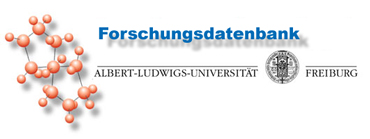| [Back to search results] |
 |

DRIeR - Drought impacts, processes and resilience: making the invisible visible
Description of the project:Drought is, by definition, an extreme and therefore rare event that affects both environmental and anthropogenic systems in complex, interrelated ways. Recent such memorable events occurred in the summer of 2003 and 2015, but historic so-called mega-events were by far more severe. In the future, droughts are expected to become more frequent in many parts of the world, and Baden-Württemberg (BW) is no exception to this. Unfortunately, the importance of droughts has been neglected by policy makers, and thus virtually no strategies exist that prepare BW for that kind of extreme events. The research alliance DRIeR addresses this challenge by pursuing an interdisciplinary approach including scientists and decision-makers from a whole range of water-related sectors alike. In a unique setup, DRIeR combines (i) climate reconstruction from historic records and tree ring proxies for long-term history, (ii) water quality and quantity indicator-to-impact analyses and statistical modelling for the instrumental record, (iii) ecological experiments combined with hydrological and land surface modelling of different land uses for simulation and scenario generation, and (iv) a comparative legal and environmental policy analysis for the recent past in BW and regions that are already experiencing and adapting to drought. As a collaboration of scientists from hydrology, historical climatology, silviculture, plant ecology, geography, law and environmental policy, DRIeR investigates specific cross-disciplinary feedbacks causing, intensifying, or mitigating the impacts of drought for the case of BW. DRIeR increases the visibility of the different aspects of drought in BW through the creation of a common drought information and collaboration platform (DICP). This acts as a centre of the network and facilitates the analysis and derivation of suitable indicators, impact information and approaches for drought management. Thereby, a stakeholder process with regulatory agencies, professionals and their representatives (e.g. from agriculture, public water supply, energy production, environmental NGOs) guides the establishment of the DICP’s structure and content at two levels: research collaboration and public information. The DICP and its linked databases will provide networking opportunities outside the project consortium and enable scientists and practitioners to connect with their own drought research and furthermore preserve assembled data.Runtime:
contact person: Stahl K, Lange J
Phone: +49(0)761 203 3532
Email: kerstin.stahl@hydrology.uni-freiburg.de
Start of project: 01.01.2016Project Management:
End of project: 31.05.2022
Albert-Ludwigs-University Freiburg
Stahl K, Lange J
Professur für Hydrologie
Friedrichstrasse 39
79098 Freiburg i. Br.
Germany
Phone: +49(0)761-203-3530
Fax: +49(0)761-203-3994
Email: hydrology@hydrology.uni-freiburg.de
http://www.hydro.uni-freiburg.de
Actual Research Report
Contributors:
- Blauhut V
- Ministerium für Wissenschaft, Forschung und Kunst, Baden-Württemberg, Land
- Trockenheit, Klimarekonstruktion, Resilienz, Auswirkungen, Trockenheitsindikatoren, Plattform